What is Zoroastrianism Religion? | Ultimate Guide
Zoroastrianism is an old religion that started in Iran thousands of years ago. It's one of the world's oldest religions that people still follow today. This religion teaches about good versus evil, with a focus on choosing good thoughts, words, and actions.
In Iran, Zoroastrianism used to be the main religion, but today it's practiced by a smaller group of people. There are still many interesting places to visit in Iran that are connected to Zoroastrianism.
If you visit Iran, you can learn more about Zoroastrian religion and even see some of the places of worship that are still used today.
The History of Zoroastrianism in Iran

Before the teachings of Zarathushtra took root, the religious landscape of Iran remains shrouded in some mystery. While scholars believe the people practiced a form of ancient Indo-Iranian religion (related to Hinduism), or perhaps a tradition followed by the Magi priests, the exact details are unclear due to a lack of reliable sources from that era.
However, by following a timeline, we can explore the fascinating journey of Zoroastrianism in Iran, from its beginnings to the present day. Let's embark on this historical adventure!
1700 B.C. - Beginnings
According to tradition, Zarathushtra, or Zoroaster in the Greek tradition, was a priest who became disillusioned with the prevailing polytheistic religion. Following a transformative experience near a river, he is said to have received a revelation from Ahura Mazda, the supreme being in Zoroastrianism. The exact details of Zarathushtra's life remain unclear. However, by drawing upon clues found within the Zoroastrian scriptures, the Avesta, scholars posit that he may have lived in Central Asia, possibly in what is now Afghanistan or Tajikistan, sometime between 1700 and 1000 B.C.E. Interestingly, tradition suggests his initial following consisted of a single convert – his own cousin.
550 B.C. - Spread
With the rise of Cyrus the Great and the Achaemenian Persian Empire in 550 B.C., Zoroastrianism found a fertile ground to flourish. The religion resonated with the ideals of the empire, and it became a prominent force in Iranian society.
Cyrus followed Zoroastrianism. Even though he believed strongly in his religion, Cyrus was known for being respectful of others' beliefs and letting them practice their own faiths within his conquered lands. He based his rule on fairness and honesty (Asha in Zoroastrianism).
Zoroastrian ideas traveled far and wide along the Silk Road, a giant trade route connecting China to Europe through the Middle East.
Some experts think that Zoroastrian beliefs, spread through the Persian Empire, influenced major religions like Judaism, Christianity, and Islam.
330 B.C. - Conquest
A major turning point came with the arrival of Alexander the Great in 330 B.C. His conquest of the Achaemenids marked a period of decline for Zoroastrianism. Unfortunately, much of the Zoroastrian scripture, the Avesta, was destroyed during this time. Only one of the 21 original books survived.
247 B.C. - Revival
Despite the setback, Zoroastrianism's spirit remained strong. The Parthian Empire, founded in 247 B.C., ushered in a revival. The Parthians actively promoted the faith, expanding its reach beyond Mesopotamia to encompass parts of India and China.
A.D. 224: Zenith
The Sassanian Empire, established in 224 A.D., marked the golden age of Zoroastrianism in Iran. The religion became the official state religion, enjoying a period of growth and influence. Interestingly, the Sassanian rulers allowed religious freedom for other faiths like Judaism and Christianity.
A.D. 651: Arrival of Islam
The Islamic conquest of the Sassanian Empire in 651 A.D. dramatically altered the landscape. With the rise of Muslim rulers, Zoroastrians faced increasing persecution. Many fled for religious freedom, with a significant migration to India. They were called Parsi.
A.D. 721: Sacred Fires
Despite the challenges, the faith persevered. A testament to Zoroastrian resilience is the Atash Bahram, the highest grade of fire, kindled in India in 721 A.D. This sacred fire continues to burn brightly today at the Iranshah temple, a symbol of enduring faith. Remarkably, another fire temple in Yazd, Iran, is believed to have a continuously burning flame dating back to 470 A.D.
A.D. 1218: Mongol Invasion
The Mongol invasion of 1218 brought further hardship. Zoroastrian communities living along the Silk Road trade route suffered heavy casualties during this period of violence and upheaval.
A.D. 1979: Islamic Revolution
The 1979 Islamic Revolution in Iran marked another exodus of Zoroastrians. With the establishment of an Islamic republic, many chose to leave for North America and Europe seeking a more welcoming environment.
A.D. 2024: Zoroastrians Today
Despite the challenges, Zoroastrian communities continue to exist around the world. Today, the largest concentrations are found in India (particularly Mumbai and Gujarat), Iran, and North America. Scattered communities can also be found in other parts of the globe, carrying the torch of this ancient Iranian faith.
Zoroastrian beliefs
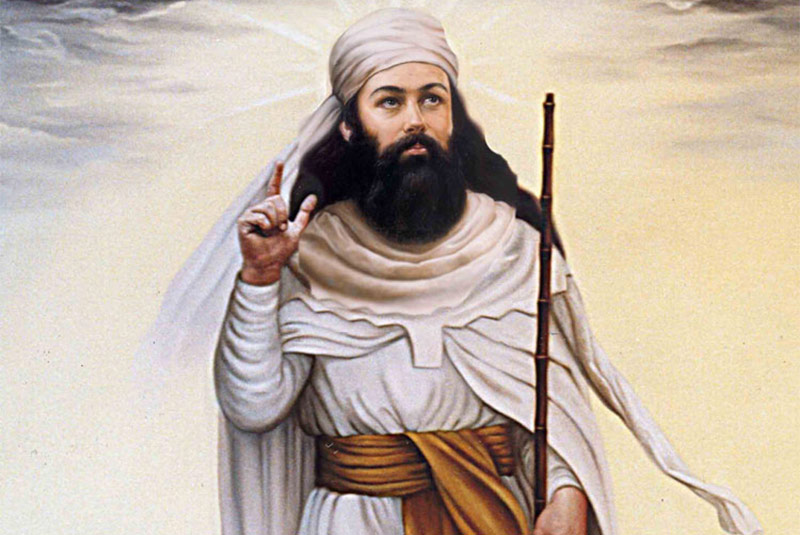
While Zoroastrianism might seem old and mysterious, its core ideas are actually quite relatable. It focuses on the battle between good and evil, the idea of coming back to life, and what happens after death. At its heart is the principle of "good thoughts, good words, good deeds."
One God and a Wise Leader
Zoroastrians believe in one God, Ahura Mazda, the creator of everything, known as the "Wise Lord." Their religion is named after the prophet Zoroaster, who founded it.
In his eternal home above, Ahura Mazda sees, knows, and can do all things. He is filled with kindness and brings forth all that is good, joyful, and happy. He remains ever constant.
A Hands-Off God and the Afterlife
Unlike some religions, the Zoroastrian god isn't one for bargaining or punishment. There's no concept of original sin requiring redemption. Instead, Ahura Mazda is more like a natural law, such as gravity, unconcerned with your daily life. Your duty lies in actively fighting for Asha (truth, righteousness, and order) against druj (filth, lies, and chaos).
After death, your soul (urvan) reunites with your guardian spirit (fravashi) and resides in a world of either song or purgatory. Then comes the final battle, where good triumphs over evil. Everyone is resurrected to live in a perfect world free of war, hunger, and earthly desires.
The Duality of Good and Evil
A key concept in Zoroastrianism is dualism, the existence of distinct good and evil forces.
The cosmic duality is the ongoing battle between good (Ahura Mazda) and evil (Angra Mainyu) within the universe. Angra Mainyu isn't an equal opposite, but rather a destructive force that opposes Ahura Mazda's creative energy. It's responsible for things like sickness and disasters. Here, good and evil are intertwined, like day and night.
The moral duality refers to the choices we make. Zoroastrians believe Ahura Mazda gave us free will to choose between good (Asha, meaning truth and righteousness) and evil (druj, meaning deceit). Choosing the path of Asha leads to happiness and a good afterlife. Ultimately, when everyone chooses Asha, good will triumph, and Earth will become a paradise. Following Zoroaster's teachings helps people choose the right path and become closer to Ahura Mazda.
| Read more: Anahita - Goddess, River, and Myth
Zoroastrian Symbols
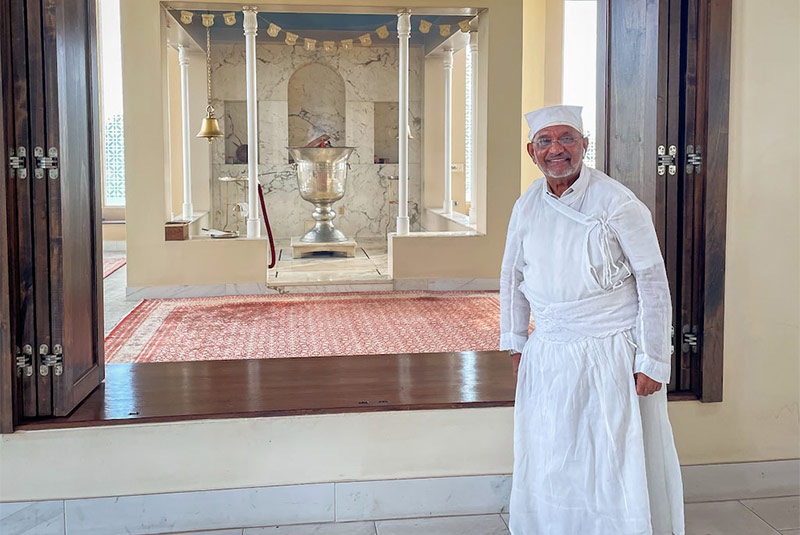
Zoroastrians use symbols to express their faith alongside their scriptures.
The Faravahar is the most recognizable Zoroastrian symbol. It features a winged human figure representing the soul, reaching towards good, with a circle symbolizing eternity.
Fire is a powerful symbol of light, warmth, and purification. Zoroastrian places of worship are often called fire temples and house an ever-burning flame. Water is another symbol of purity, complementing fire.
Fire temples are central to Zoroastrian worship. These temples house a continuously burning flame, seen as a representation of their connection to the divine. Legend mentions three especially holy fire temples may have originated from Ahura Mazda himself at the beginning of time. While the existence of these legendary "great fires" remains debated, their symbolic importance is undeniable.
| Read more: Anahita Temple - Temple of an Ancient Iranian Goddess
Zoroastrianism Practices
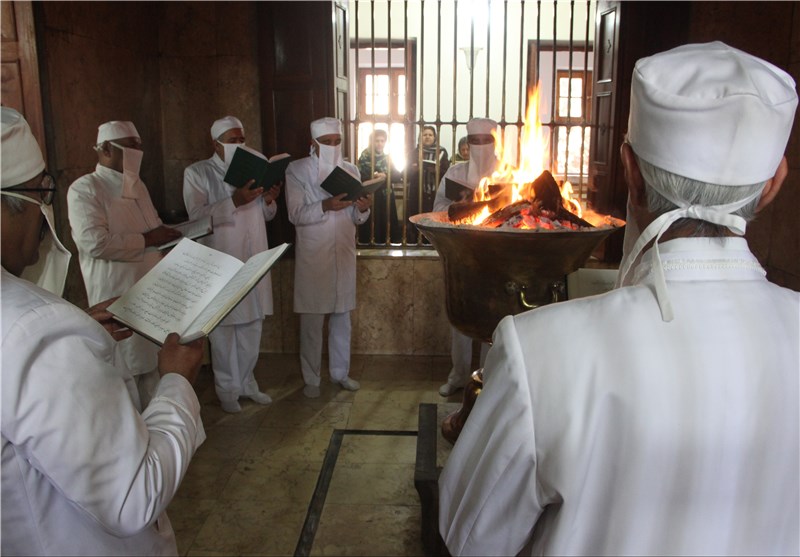
The core of Zoroastrian practice is the threefold path of Asha, a constant reminder for good thoughts, good words, and good deeds (humata, hukhta, hvarshta). This principle guides everyday life for Zoroastrians.
Traditionally, Zoroastrians practiced "sky burials." The deceased were placed in "Towers of Silence" (dakhmas) for vultures to consume the flesh, leaving behind clean bones. These bones were then placed in special pits. Due to legal restrictions, sky burials are uncommon today. Many Zoroastrians now bury their dead in a more traditional manner, although some communities in India still practice sky burials.
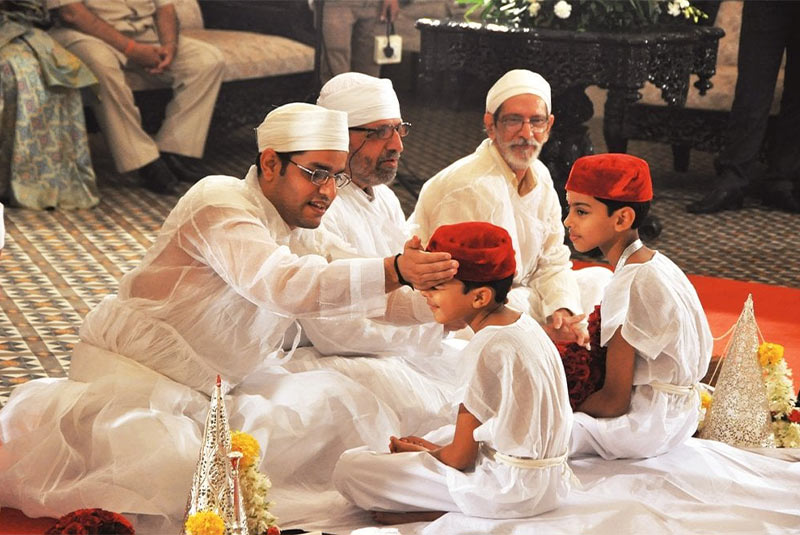
At the age of seven, Zoroastrian children undergo an initiation ceremony where they receive sacred clothing – the sudreh (shirt) and kusti (cord). The kusti is tied around the sudreh three times, symbolizing the threefold path. From then on, Zoroastrians perform daily prayers and rituals, often including hymns (Gathas) attributed to Zoroaster. Tying and untying the kusti during prayers reinforces the importance of Asha.
Zoroastrians believe Ahura Mazda created the pure natural world, demanding respect and care for the environment. They actively avoid pollution and promote eco-friendly practices. Family and community are central to Zoroastrianism, reflecting Zoroaster's own family-centered life. Worship often takes place within the home, and Zoroastrians are encouraged to improve their communities through charity, education, and social initiatives.
| Suggestion: Iranian Festivals and Celebrations
Zoroastrian Holidays
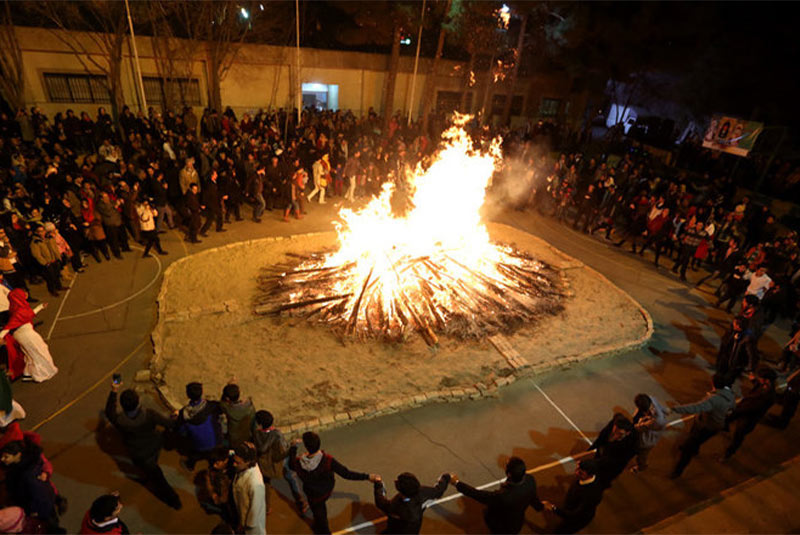
Zoroastrians celebrate holidays based on their unique calendar system, with three main versions: Fasli, Kadmi, and Shahanshahi. These holidays are tied to specific dates within the calendar.
Six seasonal festivals are celebrated each year, each honoring one of the Amesha Spenta, benevolent divine beings. These festivals, originally one-day celebrations, now last for five days, except for Hamaspathmaidyem Gahambar, which spans two five-day periods at the year's end. This ten-day festival commemorates the dead.
There are 15 name-day feasts throughout the year, with 11 dedicated to specific yazatas (worthy of worship) and 4 honoring Ahura Mazda. Special religious services are held on these days. Some of these feasts celebrate the Amesha Spenta- (dates correspond to the Fasli/Bastani calendar):
- Jashan of Bahman: Celebrates animal creation (January 16th)
- Jashan of Ardavisht: Celebrates fire and light (April 22nd)
- Jashan of Shahrevar: Celebrates metals and minerals (August 21st)
- Jashan of Spendarmad: Celebrates the earth (February 18th)
- Jashan of Kordad: Celebrates waters (May 25th)
- Jashan of Amurdad: Celebrates plant creation (July 25th)
Additional Name-Day Feasts:
- Jashan of Farvardin: Honors the Fravashis (guardian spirits) (April 8th)
- Jashan of Tir: Celebrates Tishtrya (rain deity) (July 1st)
- Jashan of Aban: Celebrates Apas (waters) (October 26th)
- Jashan of Adar: Celebrates Atar (fire) (November 24th)
- Jashan of Mihr: Celebrates Mithra (light deity) (October 2nd)
Zoroastrians also celebrate other holy days:
- Khordad Sal: A vibrant celebration of Zoroaster's birthday, featuring decorations, prayers, feasting, goal-setting, and spending time with loved ones.
- Nowruz: The Zoroastrian New Year, similar to celebrating New Year's Day.
- Zartosht No-Diso: A day to remember the death anniversary of Zoroaster.
- Pateti: Originally a day of reflection and repentance, now observed alongside Nowruz celebrations in some regions.
- Sadeh: A mid-winter festival involving a bonfire, celebrating light and warmth during the coldest part of the year.
| Related: Yalda Night - An Ancient Persian Celebration
Final Takeaway
If you'd like to experience Zoroastrianism religion firsthand, consider visiting the Yazd Fire Temple in Iran. This historic site houses the Atash Bahram, one of the highest-grade Zoroastrian fires still burning today, and serves as a powerful testament to the enduring legacy of this ancient faith.
Share your story!
Comment below and let us know about your Experience.
Your story inspires others!


Comment
Leave a Comment